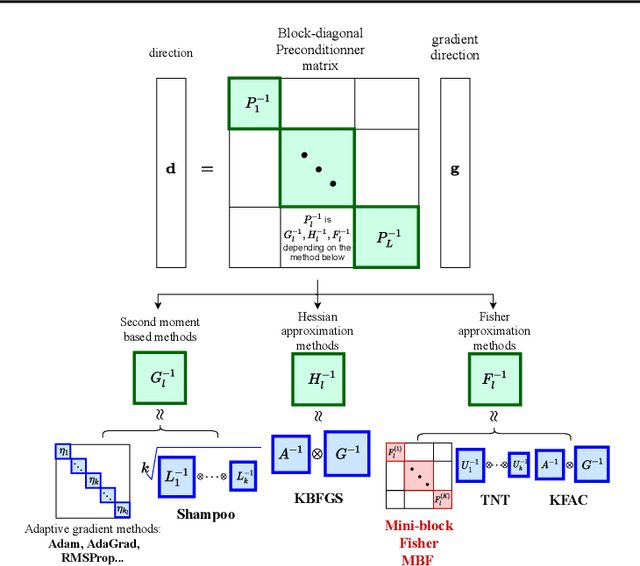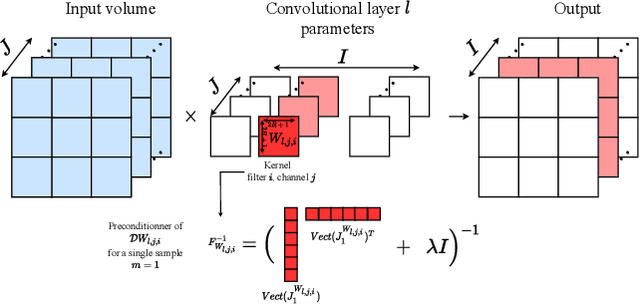A Mini-Block Natural Gradient Method for Deep Neural Networks
Paper and Code
Feb 16, 2022



The training of deep neural networks (DNNs) is currently predominantly done using first-order methods. Some of these methods (e.g., Adam, AdaGrad, and RMSprop, and their variants) incorporate a small amount of curvature information by using a diagonal matrix to precondition the stochastic gradient. Recently, effective second-order methods, such as KFAC, K-BFGS, Shampoo, and TNT, have been developed for training DNNs, by preconditioning the stochastic gradient by layer-wise block-diagonal matrices. Here we propose and analyze the convergence of an approximate natural gradient method, mini-block Fisher (MBF), that lies in between these two classes of methods. Specifically, our method uses a block-diagonal approximation to the Fisher matrix, where for each layer in the DNN, whether it is convolutional or feed-forward and fully connected, the associated diagonal block is also block-diagonal and is composed of a large number of mini-blocks of modest size. Our novel approach utilizes the parallelism of GPUs to efficiently perform computations on the large number of matrices in each layer. Consequently, MBF's per-iteration computational cost is only slightly higher than it is for first-order methods. Finally, the performance of our proposed method is compared to that of several baseline methods, on both Auto-encoder and CNN problems, to validate its effectiveness both in terms of time efficiency and generalization power.
 Add to Chrome
Add to Chrome Add to Firefox
Add to Firefox Add to Edge
Add to Edge